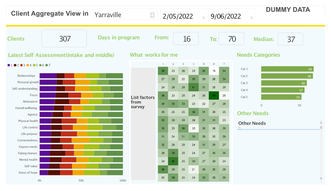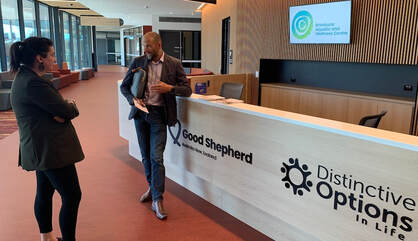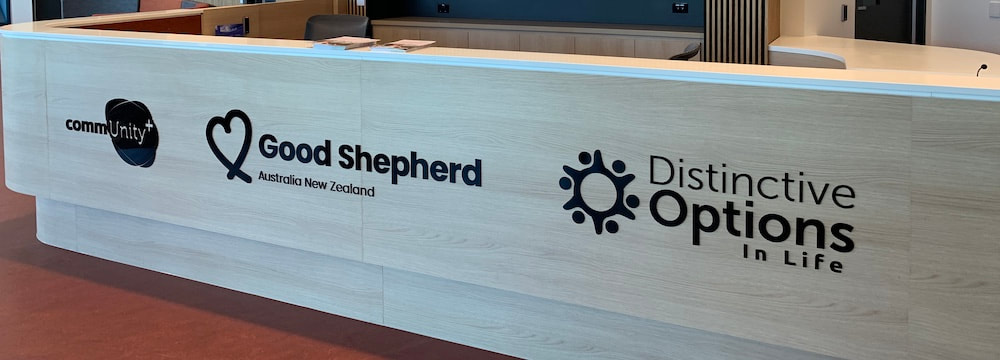5 things you can do to better empower frontline workers in your organisation:
 For Latitude Network, 2022 has been a year of growth, new challenges, and the rewards of seeing efforts come to fruition. We’re glad you’ve been with us on the journey, as partners, supporters or simply interested friends. Here are some of the highlights from our year. What are our major learnings from this year?
To the network of people with whom we work - those who are dedicated to improving social systems and social outcomes - we are deeply grateful to be collaborating with you on this important but difficult work. We look forward to connecting with more people in this movement for high performance and outcomes focus in 2023. Read about four important projects we undertook this year - Toward Home Alliance - a new way forward for homelessness servicesToward Home Alliance (THA) is a network of six housing services along with the South Australian Housing Authority, working together across South Australia to address homelessness in a single service system. In 2022, we conducted a detailed review of the Alliance’s operations and governance structure. As a trusted advisor for THA, we’ve worked with them for a number of years, and this next step allowed them to develop a new cross-agency operations manual. This truly is a ‘systems change’ project as it allows a single entity (the Alliance) to manage every part of the homelessness service system. The new operations manual was built to enable more than 100 staff working across five agencies plus multiple service partners to work to a common, integrated service model. This allows all agencies to provide more tailored, appropriate support but also to work across the usual silos of the sector. In 2023, we’ll work with THA on a ‘Continuous Quality Improvement’ process embedded in everyday operations. The aim is to continually update and improve service delivery, guided by the Ops Manual and by the data being collected by all services. Hello Sunday Morning - using data to create deeper understandingHello Sunday Morning (HSM) is a digital platform operating on mobile and desktop, established in 2009 to support people to reduce alcohol consumption and alcohol harm. Their Daybreak app enables and facilitates peer-to-peer support, generating over six million data points that HSM engaged Latitude Network to analyse.
The project helped the team interpret and segment the data and understand the stories it was telling about their clients, how they were using the app, and how to use the data to better support and engage clients. We provided detailed segmentation of the App users, provided insights about who is using the online service, for how long, how intensively, and how long they stay in contact. This allowed HSM to develop strategies to maintain connection with those likely to disengage. In 2023, we will use ‘machine learning’ tools to develop predictive models for the client to create an ongoing learning loop. This will then provide a range of early-warning data for HSM on factors such as likely client disengagement and drop-out rates and impact data. Using innovative new ways to track and measure data is crucial for services such as Hello Sunday Morning, and we’re excited to see how the service will evolve with increasingly rich and detailed data to support their development. You can read more about this project here. A CMS or Client Management System (also called a CRM or Client Relationship Management system or Case Management System) are key tools for delivering and improving social services. They are also big business, and can be quite costly to invest in. We know social organisations that have spent hundreds of thousands of dollars and for larger organisations, millions of dollars on these IT database systems. They are significant investments for cash-strapped social organisations. Yet they don’t always deliver good value. We advise clients not to rush into buying a CMS, but to first spend time designing your data ecosystem. The key to getting the most out of your IT providers is to develop a detailed, mapped set of metrics and to be clear how you will use this data for better decision making. This forms part of your functional brief to the CMS provider, but it also reduces duplication and the need to re-work your system when you need to make changes down the track. Here are our top six principles to consider before investing in a new CMS: 1. Start with the end in mindWe run what we call ‘End State’ workshops that help organisations get laser-focused on the social mission and organisational goals. As you identify what your organisation is trying to achieve, the workshop helps you identify the data you’ll need to achieve your key goals. This then enables you to decide what outputs (reports, IT dashboards) you need to generate these metrics. The End State process is an acquired skill because you have to balance frontline and client needs, quality of data, validated metrics as well and organisational and operational considerations.
In partnership with the Australian Community Support Organisation (ACSO), Latitude Network is delivering a masterclass at the upcoming International Criminal Justice Conference in Melbourne. Drawing on a decade of experience in social impact projects, Gemma, Russ and Dale will share insights on designing programs that deliver outcomes. The masterclass will focus on three key cohorts that face increasing rates of imprisonment. For example, Aboriginal and Torres Strait Islander people continue to represent 30% of the criminal population, with Australian governments and services having made little to no progress in addressing this gap. In addition, data from the increase in women’s incarceration demonstrates that 27% of women entering prison were in short-term or emergency accommodation in the 30 days prior. Remandees are the third cohort that has grown much faster than the general prison population. Building Robust, Outcomes-Focused Programs to Drive Impact and Attract Funding The masterclass will apply Latitude Network's 'Four Pillars' framework to building outcomes-driven interventions. Topics covered include:
This in-depth, robust training for leaders in the social and justice sectors will be 'hands-on' and practical, with groups working together to apply the Latitude Network Four Pillars to their own experiences and challenges. Participants walk away with initial solutions to some of their immediate challenges, exposure to the latest thinking on outcomes-based programming and service design as well as the opportunity to get feedback on their outcomes-based programs. Masterclass DetailsDate and Time: 12.30pm - 4.30pm, Tuesday 22nd November 2022
Venue: The Edge, Federation Square Melbourne Address: Flinders Street, Federation Square Grove (Conference Venue) Tickets: $150 to attend this Masterclass Bookings: Click here to book - places are limited In September 2022, the $60M Brimbank Aquatic and Wellness Centre (BAWC) was opened in Melbourne’s inner west.
Community Colleges are important providers of education and job pathways for people with various barriers to learning and employment. They sit at the intersection of adult education and social impact, and government funders are increasingly looking to explore outcomes-based funding in this sector.
Latitude Network is working with the peak body Community Colleges Australia and five community colleges to run a collaborative data project with the NSW Department of Education. The aim is to develop a common set of data collection standards across multiple colleges to allow comparative data on outcomes and performance. This is an exciting project that demonstrates how data systems, continuous improvement and innovation processes can be applied at a systems level in social and education sectors. The project is designing a system that works for multiple different organisations using different student management systems (databases), in a range of different geographies serving a wide range of student needs. The de-identified data can then be collated across multiple organisations in a consistent way to create dashboards and analysis covering different programs, locations, services and outcomes. In the next phase Latitude Network will build common dashboards and conduct periodic ‘deep dives’, or data analytics reports, to generate insights that enable colleges to improve (optimise) services and social impact. Comparative data is very powerful because it allows individual colleges to anonymously see their performance in the context of the performance of other organisations delivering in different regions. This provides evidence to flag performance gaps and to learn from best practices with objective data (not just those who claim to have good practice). This work is important for peak bodies to consider as a tool to improve system performance in any sector or sub-sector of the social services system. Watch this space for more information as the project moves to implementation. Feel free to reach out to us about lessons from this project if you are seeking to improve performance in multi-stakeholder or cross-organisation collaborations. |
Filter by:
All
Archives
April 2024
|
|
We acknowledge all First Peoples of this land and celebrate their enduring connections to Country, knowledge and stories. We pay our respects to Elders and Ancestors who guide the Aboriginal and Torres Strait Islander community. We also acknowledge the wisdom, dignity and lived experience of the people who benefit from social services.
|
Ready to harness the power of data for your organisation?
|
Data Empowered Social Impact
|








 RSS Feed
RSS Feed
